Doctor en Ciencia Animal, con énfasis en genética cuantitativa y modelación. Formación profesional en Zootecnia. Profesor Investigador del grupo de investigación Ciencia Animal en la Facultad de Ciencias Agropecuarias de la Universidad de Ciencias Aplicadas y Ambientales U.D.C.A. Investigación en metodologías de genética cuantitativa, de poblaciones y el uso de información genómica para programas de mejoramiento genético de especies domésticas, principalmente en bovinos, peces y especies menores. Dirección de proyectos de investigación a escala nacional con la participación de instituciones educativas y de investigación como la Universidad Nacional de Colombia, Universidad de Antioquia, Universidad de Massey (Nueva Zelanda) y la Corporación Colombiana de Investigación Agropecuaria AGROSAVIA. Consultoría y asesoría a la asociación de criadores de ganado Simmental y Simbrah de Colombia (Asosimmental) a través de análisis de variabilidad genética, patrones de ancestría, evaluación genética con inclusión de información genómica y el desarrollo de índices de selección soportado en metodologías bioeconómicas para optimizar el progreso genético y económico de características asociadas a producción de carne y leche.
GRUPOS DE INVESTIGACIÓN: CIENCIA ANIMAL
LÍNEAS DE INVESTIGACIÓN: Salud Humana y Animal y Sostenibilidad Ambiental
LINEAS DE TRABAJO: Genética Cuantitativa, Modelación y Estadística, Selección Genómica, Genética de Poblaciones.
PRODUCTOS DESTACADOS
Population structure and genetic diversity in ColombianSimmental cattle
Fecha de publicación: 19/11/2019
A vital requirement to design and implement a breeding program is to know the structure and genetic diversity of a population.The aim of this study was to characterize population structure and genetic diversity of the Colombian Simmental cattle. Thepedigree file included 27,985 animals born from 1975 to 2017. The level of genetic diversity and breed structure was evaluatedthrough probabilities of gene origin expressed via effective number of founders, ancestors and founders genomes. The inbreedingrates and the degree of genetic connectivity were estimated using a regression analysis and a genetic drift variance analysis,respectively. The lowest effective number of founders and ancestors were 50 and 38 by year, respectively. The average inbreedingby year of birth decreased from 5.06% in 1980 to 2.25% in 2017. The dairy line genetic contributions in the overall populationincreased significantly in the last 37 years, and the beef line contribution decreased. Regarding the genetic connectivity,Colombian regions (administrative divisions) with the largest cattle population had higher values. The results indicate that theavailability of European and North American bulls contributes to genetic diversity by increasing the effective number of foundersover time in the Colombian Simmental cattle population. However, the intensive use of relatively few founders causes anunbalanced genetic contribution and the loss of genetic diversity by gene pool erosion.
Más información ⇨
- « Anterior
- 1
- …
- 7
- 8
- 9
- 10
- 11
- Siguiente »

